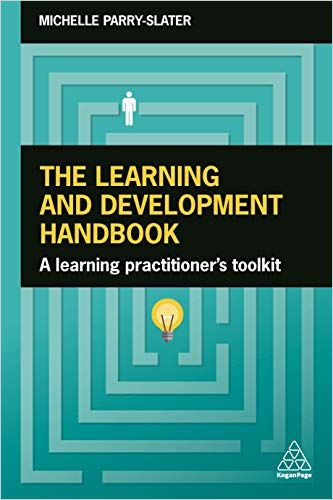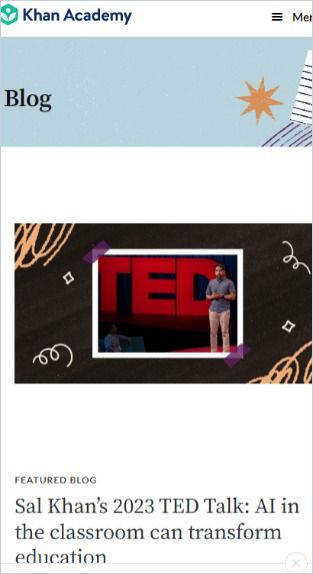Sixth Global L&D Knowledge Forum Wrap-Up
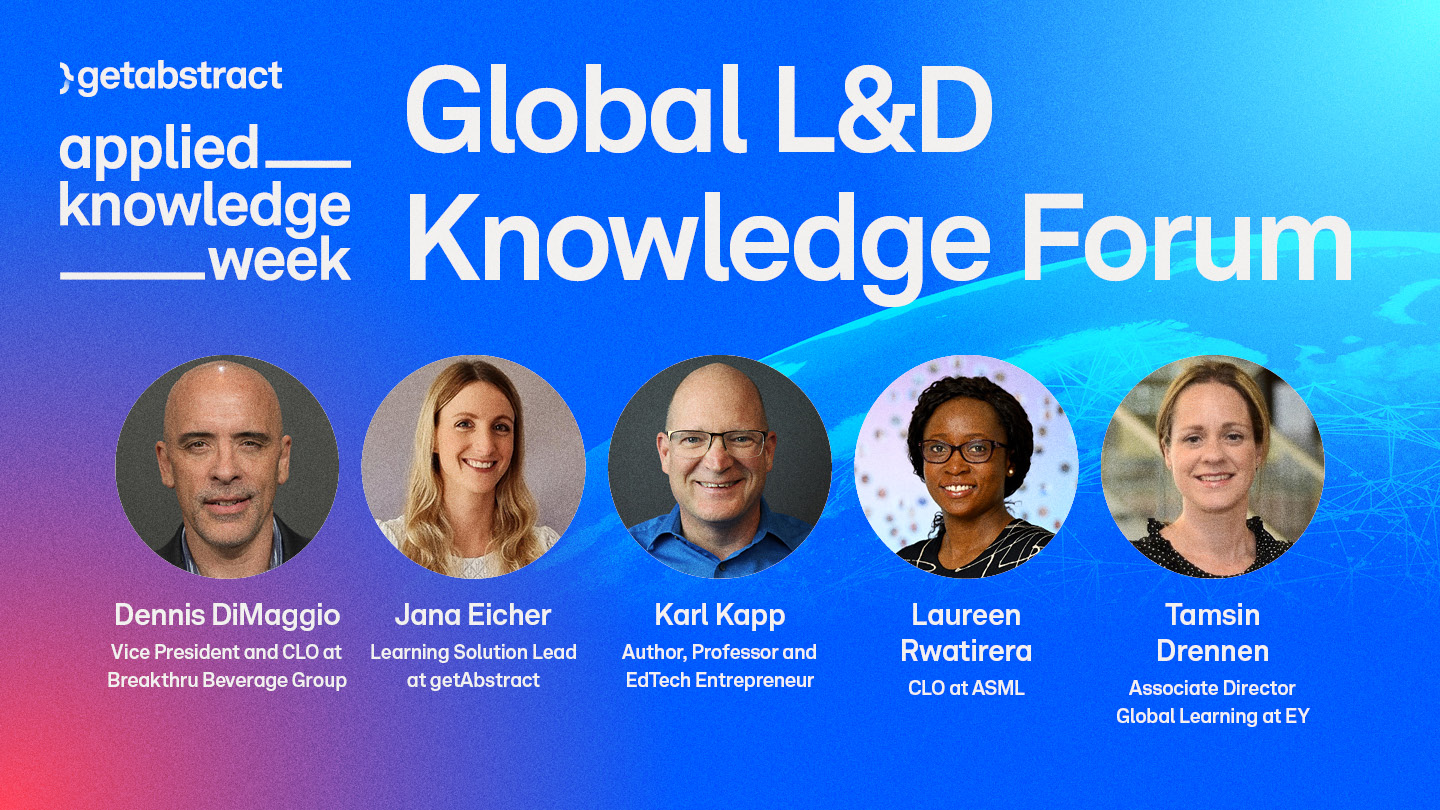
getAbstract’s sixth Global L&D Knowledge Forum took place on November 8, 2023, as part of Applied Knowledge Week – a dynamic weeklong initiative that focused on best practices for L&D implementation.
During the half-day online event, L&D expert Karl Kapp and leaders from EY, ASML, Breakthru Beverages and getAbstract shared vital insights – from future-focused skills to actionable learning best practices.
Download the conference summary here.
Here are short recaps of the key learnings:
1. Technology is Accelerating L&D Transformations
Rapid advances in science and technology and changes in society and institutional structures profoundly impact the future of learning. According to EdTech entrepreneur and scholar Karl Kapp, glimpses of the future can already be spotted – but implementation is unevenly distributed.
Kapp mentions several “supporting trends” that drive some of the key innovations in workplace learning. On the technical side, these include constant connectivity, “shrinking” devices and advances in AI and big data analysis. Furthermore, Kapp mentions the logistical challenge of having teams dispersed across different regions, as well as the growing popularity of distributed practice – learning in short sessions over an extended period.
The future is already here, we just need to know where to look.
Karl Kapp, Bloomsburg University
Concretely, these trends contribute to the growing popularity of microlearning. Indeed, The global market for these learning tools is expected to reach USD 4.65 billion by 2027. Moreover, there is a widespread effort to move traditionally analog tools and learning experiences onto digital platforms.

Advances in AI are opening the door for personalized learning applications. Kapp mentions a “personal GPT” – a personal repository of data and information that learners can query at the point of need. Furthermore, a “pocket coach” can act as a digital teacher or coach offering targeted advice. For example, during a presentation, it can let the speaker know when to speak up or slow down. Or it can help identify a physical injury and offer treatment advice.
2. Effective Knowledge Management Empowers Workforce Learning
Laureen Rwatirera, CLO at ASML, talked about the importance of preserving and helping people find and access pertinent knowledge in the work flow.
ASML is a fast-growing global company, with around 40% of the current workforce being new to the company. A key concern for Rwatirera is to help all employees effectively tap into and contribute to the company’s collective intelligence.
In terms of knowledge management, Rwatirera’s priority is to capture, maintain, retain, share and re-use knowledge so that people can find and internalize relevant learning content quickly. Best practices to do so include putting the right tools in place to facilitate information and expert finding; capturing the knowledge of experienced employees and retirees; setting up mentoring programs; and improving and driving communities of practice.
Performance is increased and time to competence is reduced by enabling the company’s collective intelligence in the flow of work.
Laureen Rwatirera, ASML
3. Approach Behavior Change Systematically
getAbstract’s Jana Eicher presented a simple yet effective behavioral change framework that can be applied to workplace learning: The COM-B Model for Behavior Change.
To achieve lasting behavior change, barriers in three different areas need to be removed.
The first question to address is whether the person has the Capability to perform the target behavior. To get up to speed, the learner may need to fill knowledge gaps, work with a coach to build skills, change unhelpful attitudes with the help of peer feedback and reflection tools, and build self-awareness of personal characteristics that are hard to change.
Secondly, create an environment that is conducive to performing the target behavior (Opportunity). Examples include ensuring that the learner has the time, space and resources needed to build the new behavior, as well as the necessary peer support and accountability structure.
Third, you will want to make the target behavior attractive and easy (Motivation). Provide incentives for developing the target behavior or tie it to the person’s professional development goals. Furthermore, make the target behavior easy to perform through choice architecture, defaults, nudges and prompts.
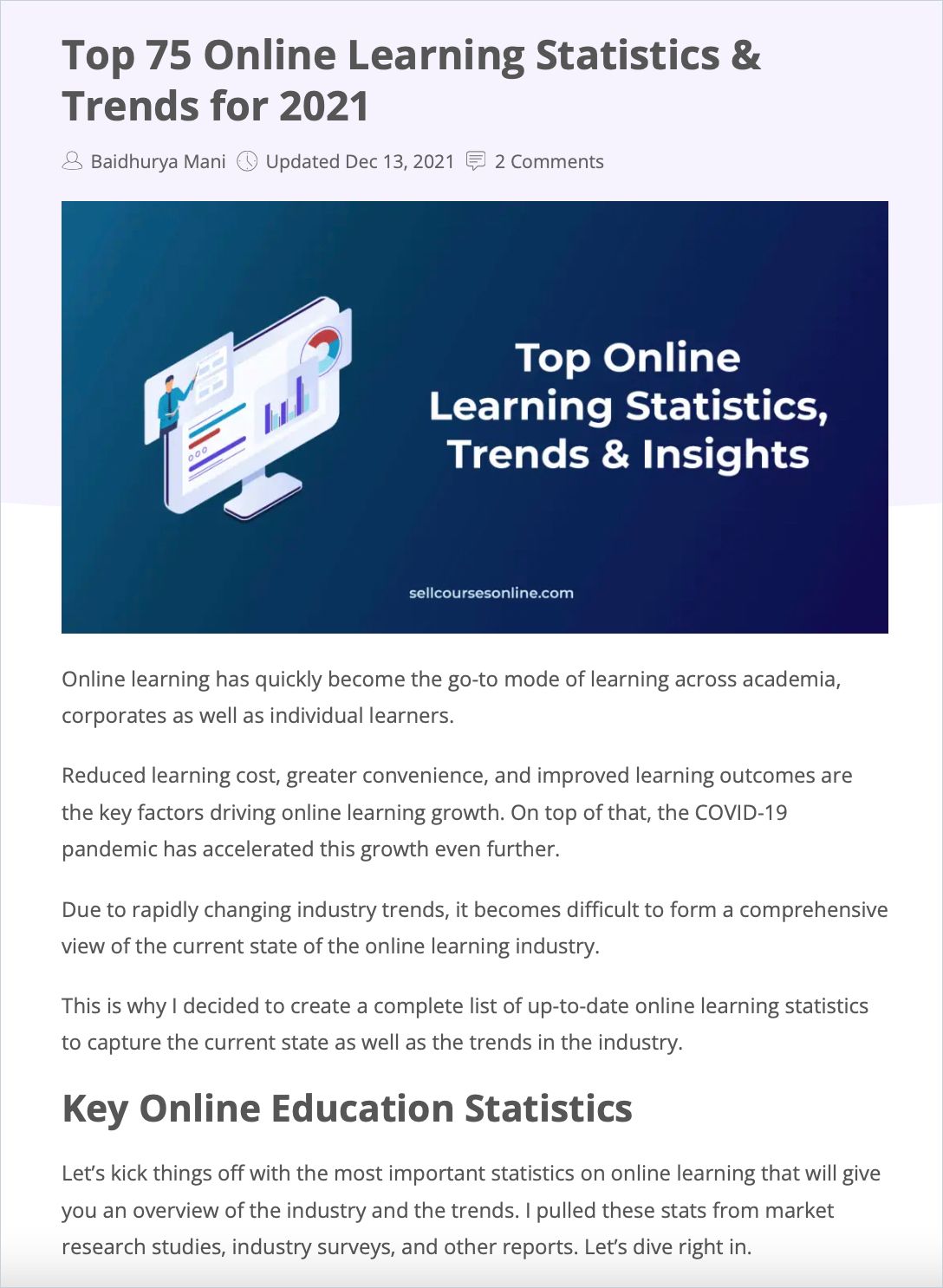
Top 75 Online Learning Statistics & Trends for 2021
Sell Courses Online Read Summary4. Learning Does Not Always Have to Be Serious – Or Take Place at Work.
Would you like to become a better listener or help your team become more innovative? Instead of looking for a course or seminar, why not pick up a new hobby? When Dennis DiMaggio’s wife gifted him a voucher for an improv class, DiMaggio quickly found that what may look like a frivolous pastime, in fact, can teach you a lot about thriving in an unpredictable, fast-changing learning environment.
Improv depends on attentive listening. You are taught to pause to make sure you understand what the other person said before you respond. A key principle in improv is to play the scene you are in, not the scene you want to be in – to be interested instead of trying to be interesting.
It’s almost impossible to listen ‘too much.’
Dennis DiMaggio, Breakthru Beverages
If you want team members to contribute their ideas, you have to make it safe for them to do so. In improv, you never want to shut down others. You agree and elevate with “Yes and…” If you contradict, people will stop contributing their ideas. In improv, you are told to treat your scene partners like geniuses. Approaching your team members with the same kind of respect and reverence is a great way to boost creativity.
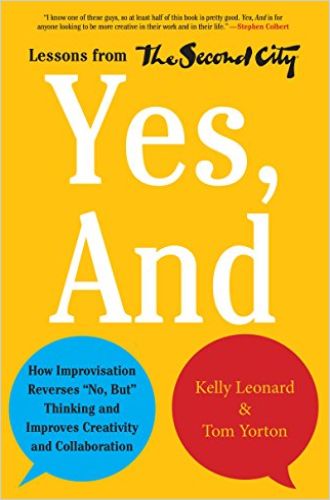
Finally, humor bonds and motivates. Laughter is a great antidote to stress. In improv, you learn to expect failure – and make it work for you. You learn to embrace a certain “humility of uncertainty” by accepting challenges but not letting them overwhelm you.
5. Motivate Learners with Digital Credentials
Digital badges are an increasingly popular way to promote learner engagement and link learning to career growth and professional visibility. Tamsin Drennen, Associate Director of Global Learning at EY, talked about the success of her company’s “Badges” program to promote future-focused skills.
EY currently offers 240 different badges across three categories: Technology, Leadership and Business. EY Badges are accredited externally by Credly and can be used as evidence of learning at EY and beyond. They form the foundation for all EY Degrees, which include fully accredited MA and MBA programs.
30% of EY’s headcount has earned at least one badge.
Tamsin Drennen, EY
The Badges program recognizes that true learning is not complete until knowledge is applied and reflected upon. Knowledge acquisition, thus, is only the first step of the Badges journey. Next, learners are prompted to apply their knowledge in real-world scenarios. The program concludes with a reflective component: learners submit a reflection paper on their experience applying the knowledge. This final step not only encourages self-awareness but also helps fortify the learnings.
Keep Learners Engaged – with getAbstract
Enabling learners to access, internalize and apply relevant knowledge with ease and at the point of need is the purpose of getAbstract’s two latest innovations. Actionables, our new microlearning tool, prompts learners to apply bite-sized knowledge in the flow of work. getAbstract AI, our chatbot-powered search function, helps learners solve their challenges with practical tips and trusted content from our knowledge library. Curious to give getAbstract AI a try? Please get in touch.
